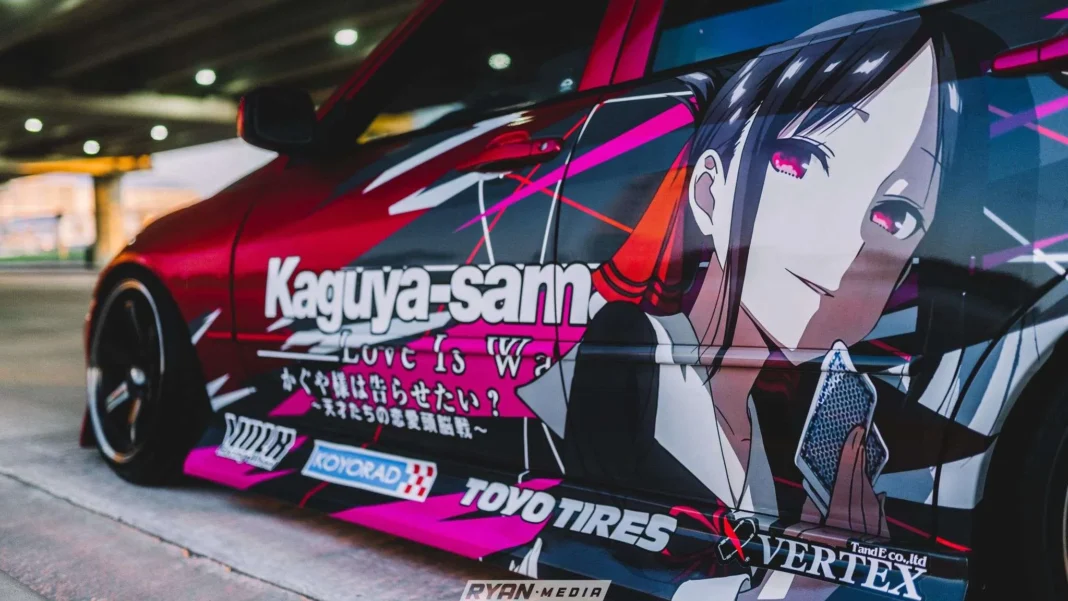Akihabara, Tokyo’s vibrant mecca of electronics and anime culture, is often recognized for its towering billboards, neon-lit game centers, and bustling crowds of pop culture enthusiasts. But if you take a closer look at the streets, especially during special gatherings or events, you’ll notice something even more eye-catching—cars dressed head to toe in anime-themed artwork. These are Itasha, a unique subculture of vehicle customization that blends automotive enthusiasm with otaku devotion. But Itasha isn’t just about flashy designs—it’s an intricate world shaped by art, technology, fandom, and self-expression.
Let’s explore seven captivating facts that uncover the science, creativity, and cultural significance behind the anime car wraps of Akihabara.
1. What’s in a Name? “Itasha” Explained
The term Itasha literally translates to “painful car” in Japanese—itai meaning “painful” and sha meaning “vehicle.” The name is tongue-in-cheek: it’s “painful” on the wallet, because of how costly the customizations can be, and to some, “painful” to look at due to its often loud and unabashed anime visuals. But for fans, this “pain” is part of the joy. Itasha drivers embrace the shock factor, taking pride in their cars standing out in a sea of everyday sedans and minivans.
2. Akihabara: The Beating Heart of Itasha Culture
Akihabara is more than just a hub for buying anime merchandise—it’s a stage for enthusiasts to showcase their Itasha masterpieces. Events like the Akihabara UDX Itasha Heaven regularly draw crowds of curious tourists and fellow hobbyists, all gathering to admire vehicles plastered with detailed wraps of beloved characters. In a city that celebrates individuality through fashion, cosplay, and collectibles, Itasha fits right in as yet another form of passionate self-expression.
3. Vinyl Wraps: The Science Behind the Art
Creating an Itasha vehicle isn’t as simple as slapping a sticker on your door. The process involves high-quality vinyl wraps, precision printing, and skilled application to avoid bubbles and distortions. Many enthusiasts collaborate with professional wrap designers who specialize in incorporating anime illustrations into a car’s curves and contours. These wraps are both durable and removable, allowing fans to update their designs as their tastes or favorite characters evolve.
This marriage of creativity and technology has turned car customization into a legitimate art form—one that requires not only visual imagination but also engineering finesse.
4. Itasha Is a DIY Dream for Some Enthusiasts
While professional wrapping can cost thousands of dollars, the spirit of DIY thrives in the Itasha scene. Some car owners use smaller decals or magnetic panels to personalize their vehicles without committing to a full-body wrap. These cost-effective alternatives are popular among younger fans or those who see their car as a temporary canvas rather than a permanent gallery. In fact, swapping out decals to reflect new anime seasons or trends has become a kind of hobby in itself.
5. Not Just for Cars: Bikes, Scooters, and Even PCs
Though most commonly associated with cars, Itasha culture has branched out into other vehicles—and even beyond. Motorcycles (Itansha), bicycles (Itachari), and even laptops or computer cases (Itapc) can be found adorned in anime-themed designs. This widespread application reflects a broader philosophy within otaku culture: why limit your fandom to posters and figures when you can incorporate it into your everyday life?
In Akihabara, it’s not uncommon to see a group of riders parked outside a café, their scooters gleaming with vibrant decals of mecha pilots or magical girls.
6. Community and Camaraderie: A Mobile Brotherhood
What makes Itasha culture thrive isn’t just the cars—it’s the community. Owners often form clubs and social groups, attending exhibitions or touring together across Japan. These gatherings are more than car shows; they’re spaces for connection, creativity, and mutual appreciation. Conversations quickly move beyond horsepower and chassis to favorite voice actors, story arcs, or obscure trivia from a particular anime series.
This shared language of fandom forms bonds that transcend age, profession, or background, creating a uniquely inclusive corner of the car enthusiast world.
7. A Reflection of Pop Culture’s Global Reach
As anime continues to gain international popularity, Itasha has begun to turn heads overseas. From Los Angeles to Berlin, car shows now include vehicles inspired by Japanese animation, showcasing the global influence of the subculture. Akihabara remains the spiritual center, but the phenomenon is no longer confined to Japan’s borders.
For many, customizing a car in this way is more than decoration—it’s an identity. Itasha enthusiasts often describe their vehicles as extensions of themselves, mobile billboards of their passion and creativity.
In Conclusion: Moving Canvases of Passion
Itasha may seem eccentric to the uninitiated, but for those who understand its roots, it’s a celebration of art, storytelling, and individuality. In Akihabara, these moving masterpieces aren’t just transportation—they’re declarations of love, not just for vehicles but for the worlds and characters that inspire them.
From intricate wrap designs to a vibrant community, Itasha culture represents the perfect intersection of fandom and function. Whether you’re a seasoned car modder or a curious anime fan, these expressive vehicles invite you to see customization not as a display of ego, but as a heartfelt tribute to the stories that move us—even on four wheels.




